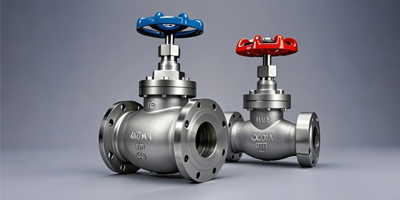Valves are the "control switches" of fluid systems, used in everything from industrial pipelines to home water supplies. Among the most common types, ball valves and gate valves often cause confusion—while both regulate fluid flow, their design, performance, and ideal uses differ sharply. Understanding these differences is key to avoiding misselection, reducing maintenance costs, and ensuring system safety.

The fundamental difference lies in their "flow-control components," which determine how they operate.
Ball Valve: Features a hollow or solid spherical core (the "ball") with a through hole in the middle. The ball is connected to a valve stem; rotating the stem (90 degrees, usually) twists the ball to align or block the hole with the pipeline. Think of it as a "rotating door"—a quick turn opens or closes the path.
Gate Valve: Uses a flat or wedge-shaped "gate" (a plate-like component) that moves up and down along the valve’s center axis. Turning the valve stem lifts the gate to open flow or lowers it to seal the pipeline. It acts like a "(elevator door)"—slowly lifting to create a full, unobstructed passage.
Their structural differences translate to big gaps in how they perform. Below is a side-by-side comparison of key metrics:
| Metric | Ball Valve | Gate Valve |
|---|---|---|
| Switch Speed | Fast (90-degree rotation, 1-2 seconds) | Slow (requires multiple stem turns, 30+ seconds) |
| Sealing Performance | Excellent (full closure; minimal leakage even with low pressure) | Good only when fully open/closed; high risk of leakage if half-open (gate gets eroded by fluid) |
| Flow Control | Suitable for on/off only; not for throttling (partial opening causes valve damage) | Not for throttling (half-open gate vibrates and wears); only for full open/close |
| Flow Resistance | Low (full open: ball hole matches pipeline diameter, no obstruction) | Low when fully open; high when half-open (gate blocks flow) |
| Applicable Media | Versatile—works for water, oil, gas, and even fluids with small particles (e.g., wastewater) | Best for clean, non-corrosive fluids (e.g., tap water, steam); particles can get stuck under the gate, jamming it |
| Maintenance Needs | Low (simple structure; few moving parts; less prone to wear) | High (gate and valve seat easily erode; requires regular cleaning to prevent jamming) |
Summary of Differences:
| Feature | Ball Valve | Gate Valve |
|---|---|---|
| Mechanism | Spherical ball with hole | Flat or wedge-shaped gate |
| Operation | Quick (90° turn) | Slower (multiple rotations) |
| Flow Control | On/off only, no throttling | On/off or throttling (in some cases) |
| Seal Quality | Tight seal, minimal leakage | May leak more over time |
| Maintenance | Low maintenance | More maintenance required |
| Flow Resistance | Minimal | Higher when open |
| Best For | Quick shut-off, smaller systems | Large-diameter systems, flow control |
| Cost | More expensive | Less expensive |
Choose a Ball Valve If: You need quick on/off control (e.g., emergency shutoff for gas pipelines), work with diverse fluids (including slightly impure ones), or want low maintenance. Common uses: home gas lines, industrial chemical pipelines, and irrigation systems.
Choose a Gate Valve If: You need long-term, full closure (e.g., main water valves in buildings) and work with clean fluids. They’re ideal for scenarios where frequent switching isn’t required—such as municipal water supply networks or steam pipelines in factories.
"Misusing these valves can lead to costly issues," says John Miller, a senior fluid system engineer with 15 years of experience. "For example, using a gate valve for frequent on/off cycles will wear its gate in 6-12 months, while a ball valve can last 5+ years in the same scenario. Conversely, using a ball valve for partial throttling (e.g., regulating shower water flow) will damage its seal within weeks."
Whether for industrial projects or home renovations, matching the valve type to your specific needs—speed, fluid type, and usage frequency—ensures reliable, long-lasting operation.If you want to know more about valves, you can click SGON Valve, we will do our best to help you
GET A QUOTE